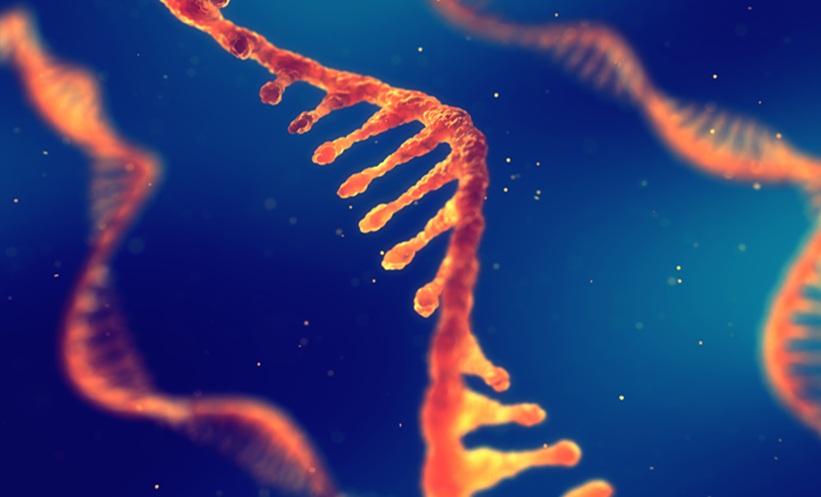Marina Berenguer | Professor of Medicine, University of Medicine, Valencia, Spain; Head of the Hepatology and Liver Transplantation Unit, Servicio de Medicina Digestivo, Hospital Universitari i Politècnic La Fe, Valencia, Spain
Citation: EMJ Hepatol. 2023;11[1]:40-42. DOI/10.33590/emjhepatol/10304949. https://doi.org/10.33590/emjhepatol/10304949.
![]()
Was there a particular event or person that encouraged you to pursue a career in hepatology?
I started doing gastroenterology because of my father, who was a gastroenterologist, and who started the Liver Transplant Unit in Valencia, Spain, together with a liver surgeon colleague. This unit was opened just a few years before I became a resident. It was exciting to see how patients who were extremely sick could start a near normal life only 1 month after the transplant. At that time, quite a few years ago, there were not many effective therapies available in the field of hepatology, and the management of the cirrhotic population by hepatologists had relatively low impact on survival. Most residents were mostly interested in endoscopy or gastroenterology, and hepatology was considered less attractive as a speciality because of this lack of effective therapies. After a few good experiences with transplant patients, I knew I wanted to become a ‘transplantologist’ in the Hepatology Unit.
You have been involved in the creation of various consensus documents on viral hepatitis and liver disease. How do these documents impact care for affected patients?
Consensus documents are very important for several reasons. First, they summarise what we know and are based on evidence created over many years. Second, they serve as a legal document that every physician can rely on when applying certain practice or therapies in their respective countries. They also help with pushing the machinery; this was very clear with the direct-acting antivirals (DAA) against hepatitis C. When they were initially launched, there was a huge debate regarding indications due to the high price and reluctance from health care payers. In fact, the penetrance of DAAs in the different European countries was done at different speed. Germany started first, but other countries took much longer, due to cost discussion with authorities. Guidelines and Consensus Documents can help patients and physicians by ‘pushing’ health authorities to accept new standards of care.
One of your recent papers looked at long-term outcomes after living donor liver transplantation compared to donation after brain death in autoimmune liver diseases. What were some of the main findings?
This was a multicentre study, with many authors, using the European Liver Transplant Registry (ELTR). We were interested in the outcome of patients undergoing liver transplantation for several autoimmune liver diseases (autoimmune hepatitis, primary sclerosing cholangitis, and primary biliary cholangitis), particularly focusing on post-transplant outcomes with donors who were either brain-diseased or live donors. We found that, particularly for patients with primary sclerosing cholangitis, outcomes seem to be worse with live donors. We are unsure of the cause, but it might be related to the fact that this disease is based on injured biliary ducts. In live donation, the anastomosis between the donor and the recipient biliary ducts is more difficult, and this may have an impact on post-transplant outcomes. Our data showed that live donors were an excellent option for autoimmune hepatitis and for primary biliary cholangitis, but not so much for primary sclerosing cholangitis.
What are the biggest challenges for the European Association for the Study of the Liver (EASL) in their goal to promote the highest standard of practice in hepatology and benefit patients?
Personally, I believe that currently EASL is one of the strongest societies in the field of hepatology. They not only target hepatologists but also health allied players, industrial partners, and incorporate patients’ associations in their discussions regarding standard of practice. The future of medicine, the future of hepatology, and the future of medical societies is uncertain. There is a lot of competition, digital technologies are permeating the society, the development of drugs is a difficult pathway, and societies will struggle to maintain their attractiveness, as well as being economically solvent. There is also the question of what meetings will be like in the future. There are many factors to consider, including cost, sustainability, carbon imprint, interest of the members, interest of industries in the classical meeting, and e-technologies. EASL will have to adapt to the challenge as it has successfully done for years.
Having authored and co-authored multiple peer-reviewed articles, which parts of your research do you feel have had the greatest impact on practice, and what are you most proud of?
The biggest impact has been on hepatitis C and liver transplantation, because that is where my major research lies. There are two papers that I love. The first showed that by using specific donors with certain characteristics the outcome of patients undergoing liver transplantation for hepatitis C could be significantly enhanced. This led to several centres to apply some rules when selecting the donors in hepatitis C-related indications, which eventually may have had a direct impact on patient outcomes. The second paper looked at ways of enhancing the efficacy of interferon-based therapies when we did not have DAAs, and what measures could be put in place to benefit the highest number of patients with the lowest number of side effects and problems. Again, this was something that benefitted the patients. I am proud of some other papers because they have helped my colleagues to grow in their careers. There are different types of ‘successes’: personal benefit (the career, for instance), benefit for the patients, and benefit for the colleagues, which is also very rewarding.
Could you highlight some of the key information you presented at the EASL 2023 Congress, on topics ranging from hepatocellular carcinoma to liver transplantation for acute-on-chronic liver failure?
We had the chance to present the results of several studies, many of which were collaborative multicentre studies in Spain. One study was on the use of anti-coagulant in the cirrhotic population, and how these drugs are safe in this population and can lead to improved outcomes. Another was a study on risk-stratifying patients with advanced liver disease following the cure of the hepatitis C virus infection with the new direct antiviral agents. Although the virus is eliminated, there is a persistent risk of developing a liver cancer, and so these patients need to be monitored in the long-term. In the study, we applied different models that have been developed to risk stratify the patients in our population and showed the usefulness and limitations of these models.
We also had presentation on hepatitis D, a virus without treatment until very recently. We now have new drugs that are being developed and approved by the authorities, but we need to make sure that these drugs reach the patients, and over the years, several of these patients have been lost in the system and have not been followed carefully in clinics because we did not have much to offer. It is now time to link these patients back to our clinics. To achieve this, we went through a microbiology registry of all the microbiological results in the region where I work, and we were able to link back to care a proportion of patients, as well as make new diagnoses. Another part of the study focused on undocumented migrants who have never been tested. We specifically went to non-governmental organisations and used non-invasive tests. I did not present on this part of the project because it is still ongoing, but it has been very rewarding because we have detected infected individuals who were unaware of the infection and were able to link them to care.
Over the course of your career to date, what are the most significant changes you have observed in liver transplantation? Are there any noteworthy advances on the near horizon?
There have been huge changes with an impact on the greatest challenge in liver transplantation today, which is to find organs for all recipients at need. This gap has kept rising over the years to ultimately reaching a certain plateau, at least in some countries due to several reasons. The major one is the impact of DAAs on the number of patients with hepatitis C at need for liver transplantation either because of decompensated cirrhosis or liver cancer. Hepatitis C-related liver disease was, for many years, the first indication for liver transplantation, and is now a relatively rare indication. In countries like Spain, the numbers have dropped so much that our waiting lists are now much shorter and candidates typically wait less than 6 months.
Secondly, for many years, we only retrieved organs from donors who were brain-dead. Now, we are using organs from donation after circulatory death. This has also had an impact on the number of available donors.
Finally, the third reason is the use of machines that perfuse the organs and help surgeons to decide which organ is of sufficient quality to be successfully implanted, and also that help in maintaining the quality of the organs for several hours so that the timing of transplantation can be optimised. In the future, we may even be able to treat these organs while they are put on these machines, such that suboptimal organs may become usable by successful reconditioning.
What advice would you give to those who are starting out in the field of hepatology?
I would tell them to just enjoy this speciality. It is a very complicated field but extremely attractive; many changes have been happening in recent years. Now we have drugs that can be successfully used in several diseases. The liver is a hugely complicated organ. I would say it is much more complex than, for example, the heart, providing many research opportunities that are challenging. It is a beautiful career, so I would really encourage everybody to go into hepatology and liver transplantation if they can, because it is very rewarding.







